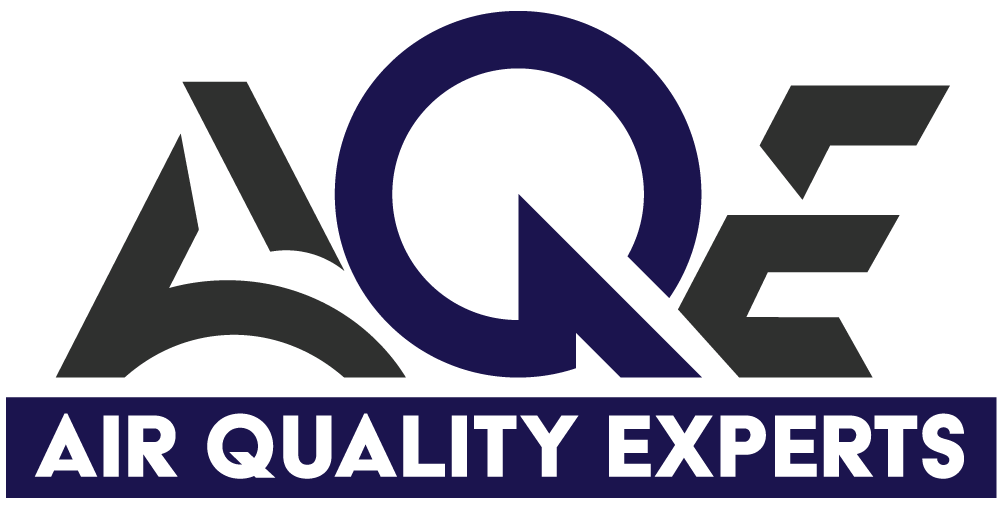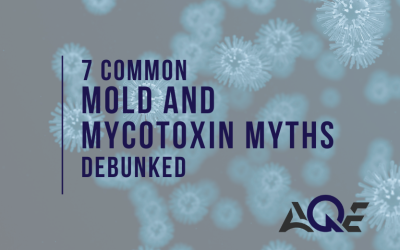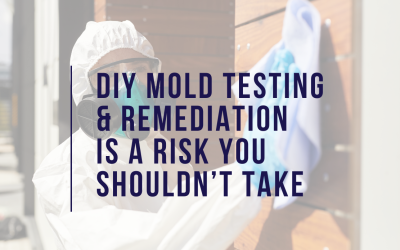Mold Testing
As homeowners and residents become more aware of the potential hazards lurking in their homes, concerns about mold and mycotoxins have come to the forefront. Mold, a common household issue, can lead to various health problems and structural damage if not addressed promptly. Mycotoxins, the toxic byproducts produced by certain molds, add an additional layer of complexity and risk. While you may be concerned about mold in your home, if you are experiencing health symptoms, simple mold testing may not give you the answers you’re seeking.
This blog aims to clarify the differences between mold and mycotoxins, helping you understand their distinct characteristics, health impacts, and the importance of addressing these contaminants to ensure a safe and healthy home.
Mold & Mold Testing
What is mold?
 Mold is a type of fungus that plays a vital role in breaking down dead organic matter in the natural environment. Unlike plants, mold does not need sunlight to grow; it thrives in dark, damp places. Physically, mold can appear as fuzzy or slimy patches on various surfaces and comes in a range of colors, including green, black, white, and brown. Mold’s appearance can vary depending on the type of mold and the surface it grows on. Even in cases where there are no visual identifiers, mold testing may still reveal harmful growth in your home.
Mold is a type of fungus that plays a vital role in breaking down dead organic matter in the natural environment. Unlike plants, mold does not need sunlight to grow; it thrives in dark, damp places. Physically, mold can appear as fuzzy or slimy patches on various surfaces and comes in a range of colors, including green, black, white, and brown. Mold’s appearance can vary depending on the type of mold and the surface it grows on. Even in cases where there are no visual identifiers, mold testing may still reveal harmful growth in your home.
Mold thrives in environments with high humidity and moisture. Common conditions that support mold growth include warm temperatures, stagnant air, and damp surfaces. Areas in the home that frequently become wet or humid are particularly susceptible to mold growth, like bathrooms, kitchens, and laundry rooms, but basements and attics can also commonly have issues that cause mold to thrive there.
Once mold is in your home, old spores are microscopic and lightweight, allowing them to become airborne easily. These spores can spread via air currents, HVAC systems, and even on clothing or pets. Once the spores land on a suitable surface with the right conditions, they can begin to grow and colonize.
What health affects can mold have?
Exposure to mold can lead to various health issues, especially for individuals with allergies, asthma, or weakened immune systems. Common health effects of mold exposure include:
- Allergic Reactions: Mold can trigger allergic responses in sensitive individuals. Symptoms can include sneezing, runny or stuffy nose, red and itchy eyes, and skin rashes.
- Respiratory Issues: Inhaling mold spores can cause respiratory problems, such as coughing, wheezing, and shortness of breath. For those with asthma, mold exposure can exacerbate symptoms and lead to asthma attacks.
- Irritation: Mold can also irritate the eyes, skin, nose, throat, and lungs of both mold-allergic and non-allergic people.
Long-term exposure to mold, especially in high concentrations, can lead to more severe health problems, making it crucial to identify and address mold growth promptly in your home.
Mycotoxins & Mycotoxin Testing
What are mycotoxins?
Mycotoxins are toxic chemical byproducts produced by certain molds. These toxic substances are known as secondary metabolites, meaning they are not essential for the mold’s growth or reproduction but can have significant impacts on the health of humans and animals. Mycotoxins can be found on mold spores and fragments and can become airborne, contaminating the air and surfaces within indoor environments.
What exactly produces mycotoxins?
Not all molds produce mycotoxins; only specific species are known to produce these harmful compounds. Some of the molds most commonly associated with mycotoxin production include:
- Aspergillus: This mold can produce aflatoxins, one of the most well-known and dangerous mycotoxins, often found in improperly stored grains and nuts.
- Penicillium: Known for producing various mycotoxins, including ochratoxin, which can contaminate a range of food products.
- Fusarium: This mold produces mycotoxins such as fumonisins and trichothecenes, which can contaminate crops like corn and wheat.
Each type of mycotoxin can have different sources and effects. For example, aflatoxins produced by Aspergillus are highly toxic and carcinogenic, commonly contaminating agricultural products, while ochratoxin produced by Penicillium can cause kidney damage and is also found in contaminated foods.
What affects can mycotoxins have on health?
Exposure to mycotoxins can lead to a variety of acute and chronic health effects, depending on the type and level of exposure. Some of the health impacts include:
- Acute Health Effects: Short-term exposure to high levels of mycotoxins can cause severe health issues such as immune suppression, leading to increased susceptibility to infections. Neurological problems, such as tremors and confusion, can also occur.
- Chronic Health Effects: Long-term exposure to lower levels of mycotoxins can result in serious health problems over time. Symptoms may include persistent immune system suppression, chronic fatigue, and respiratory issues. Mycotoxins have also been linked to more severe illnesses such as cancer and liver damage. For example, prolonged exposure to aflatoxins is known to be a significant risk factor for liver cancer.
Recognizing the potential dangers of mycotoxin exposure is crucial, especially in environments where mold is present. Given their invisible nature and the serious health risks associated with them, addressing mycotoxins requires careful assessment and professional intervention to ensure a safe indoor environment.
Addressing Mold and Mycotoxin Contamination
Mycotoxin Mitigation
Addressing mycotoxin contamination requires thorough cleaning and remediation, as mycotoxins can be deeply embedded in materials and hard to remove. Here’s how to effectively mitigate mycotoxins:
- Assessment: Conduct a comprehensive assessment to identify the presence and extent of mycotoxin contamination through professional testing and analysis.
- Deep Cleaning: Professionals will use specialized cleaning techniques to remove mycotoxins from surfaces and the air. This may involve HEPA vacuuming, using air scrubbers, and employing specific cleaning agents designed to neutralize mycotoxins.
- Material Removal: In cases of severe contamination, it may be necessary to remove and dispose of contaminated materials, such as drywall, insulation, and carpeting.
Given the serious health risks associated with mycotoxin contamination, professional help is essential. Only a professional can ensure that all contaminants are properly identified and removed, minimizing health risks and preventing recurrence.
If you suspect mold or mycotoxin contamination in your home, you should contact professionals for mold testing immediately. Our experts are equipped to handle these issues and ensure your indoor environment is safe and healthy.
Check out our other recent blogs:
A Comprehensive Guide to Preventing Mold Growth in Your Home
Preventing Mold Growth Mold isn't just an unsightly nuisance—it can pose serious health risks and damage your property. Whether you're dealing with Georgia's humid climate or simply want to maintain a healthy indoor environment, taking steps towards preventing mold...
7 Common Mold and Mycotoxin Myths Debunked
With myths of every sort pervasive on the internet, it can be hard to know what information is trustworthy. But when it comes to mold and mycotoxin myths, that confusion can cause real harm to your health or that of your family. As professionals, it's our job to cut...
DIY Mold Remediation is a Risk You Shouldn’t Take
DIY Mold Remediation It’s easy to understand why homeowners might be tempted to attempt a DIY mold fix. Mold can appear out of nowhere, and with the abundance of online guides and affordable DIY mold testing kits, handling the issue yourself can seem like a fast and...





